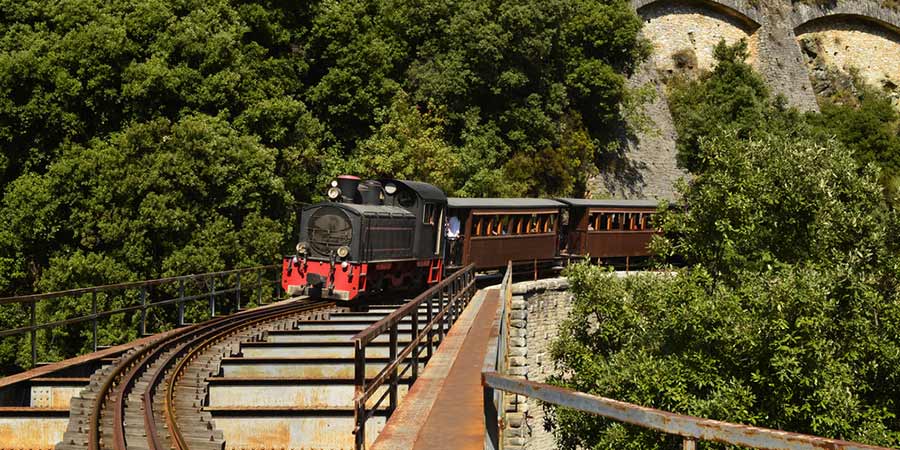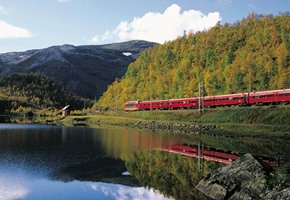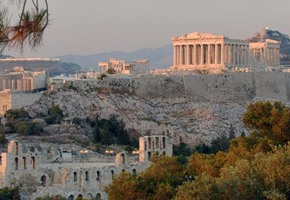The Pelion Railway, on which rides the fabled Little Train of Pelion, is a narrow gauge railway line in Greece, originally operated by Thessaly Railways. The train runs as a connection between the city of Volos and the town of Mileai on Pelion.
The first part of the track was constructed in 1886 connecting Volos to Larissa, and, after its popularity it was decided that the track would be extended to connect Volos with the environs of the Pelion Peninsula. The first train to grace the track was called Moutzouris, it had 26 wagons, 14 used as passenger carriages and the remaining 12 were utilised for cargo transportation, benefiting greatly for the recent affluence of the area. Many of the villages that the train connected relied upon it as their only means of transportation to the wider continent.
The train's journey is steeped in the mythos of Greece, and crosses the legendary routes of the Centaurs. Ancient Greek mythology has it that Pelion was the summer habitat of the twelve gods of Olympus. The station of Milies reportedly sits close to the site where Pileas and Thetis were wed, the parents of Achilles. Another mythical site is passed by on the final turn of the track before Milies. In one of the many gorges the train passes through, a mythical cave awaits, said to be that of Centaur Chiron, an important figure in Greek mythology. Chiron was the teacher of Achilles, it is said that he gave Achilles the spear that he eventually wielded in the Trojan War. The cave is at the base of the rock where the chapel of Taxiarchis is found today.
It is important to recognise the way that this famous train has helped the region it runs through, the importance of the freight it carried, and today how its tourists continue to visit the area. Much of the past affluence of the Pelion region can be attributed to this train, and the way in which it facilitated the growth of local industries and trade. It is also entwined in the mythology of Greece, passing many famous sites. Overall the train is more than just the icon it represents today, and is emblematic of the wider history of the region and of the people who used to inhabit it.



